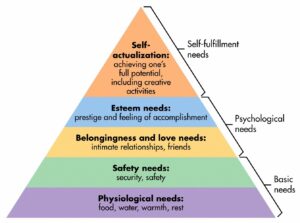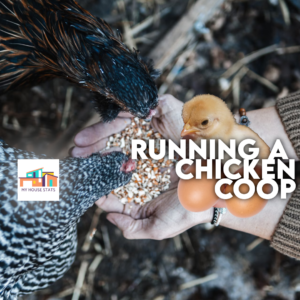How to Get the Coziest Blankets
Praise God because Blankets are about to corner the heating market if the power grid takes a tumble. These woven heaters are also known as a covering, quilt, comforter, or duvet. It’s the big woven material that covers you with warmth, similar to how it keeps animals warm. You can rock a blanket in the form of a comforter, duvet, quilt, a throw blanket, a weighted blanket, or an electric or heated blanket. Blankets differ by material, condition, size, material, price, and seasonal use.
What’s Important in Your Blanket?
Fabric Material for Your Blankets
The fabric material is criteria one. You’ll go with material based on what weather it’s good for and if it’s allergy-proof. These can be knitted or woven to make your blanket. Some fabric materials are good all-year round, some are good for winter, or some for summer.
The softest fabric materials to make blankets are fleece, plush, and velvet. If you’re trying to dodge allergies there’s materials for you. These are wool, silk, bamboo, and cotton. They’re great because they don’t collect allergens between blanket fibres. Look out for certified organic fabrics made without harmful chemicals. Other common blanket materials are polyester, down, microfibre,mink fur, vellux, and cotton.
Is It New or Used?
You will come across brand new or second-hand or used blankets. These two conditions differ in how often they’ve been used and their price. Brand new blankets have yet to be used and are sold at full price, making it more expensive. Second-hand or used blankets have been used before and are cheaper. Sometimes used or second-hand blankets are sold at half the price of a brand new blanket after repair and dry cleaning.
How Big is Your Blanket?
Just like how we all come in different shapes and sizes, there’s a blanket sized just right for your needs. Ideally you want one big enough to cover you fully. For example, you can grab blankets depending on the size of your mattress, such as king, queen, or twin.
How Much Your Blankets Cost
These weaves of heat range from $10 to thousands of dollars. It comes down to two things: how big your blanket is and if you’re shopping online or in-person at a physical store.
Your blanket size affects how much guap you’ll have to drop on it. If you’re strapped for cash you can find cheap material with simple designs. Throw blankets are cheaper, lightweight, made from synthetic material, and meant for one person. Or if you’re balling out you can throw some dough on something like a duvet or weighted blanket.
Where you’re shopping at will also affect how much bread you’ll trade to get that blanket. Shopping in-person at a physical shop will present more bargains you can try to find. On the other hand online shopping lets you take advantage of vouchers and sale offers.
Which Seasons It’s Useful In
There’s different blankets for different seasons. A winter blanket’s going to be way too hot in the summer. Likewise, a summer blanket won’t keep you warm in the winter. For winter you’re going to want a heavy blanket made with something like wool. When it’s hot out you can rock a lighter blanket that’s breathable. You can also add light layers to duvets and comforters for more coziness.
There’s All Sorts of Blankets

Starting with the Comforter
A comforter is a thick, plush blanket you can use year-round. It’s made of two big fabrics sown together. Inside it has materials like down or light cotton. The fill amount determines how heavy it is instead of how warm it is.
The material type determines its weight, how breathable it is, and how good it absorbs moisture. When made with synthetic fibres it’s spread evenly through the material.
Prices differ for luxury and budget comforters. Luxury comforters are made with a higher thread count, are filled with down, and can’t be washed in a washing machine. Budget comforters not as filled, but can be washed in a washer an drying machine.
Staying Heated With a Duvet
A duvet’s not that different from a comforter. It can be filled with down, cotton, wool, or synthetic batting. It’s meant to be put into interchangeable duvet covers and its insert isn’t sewn through.
Some are warmer than a light or medium comforter. A heavy one will do you good in the cold. It’s made with all sorts of fabric material. The only problem with duvets is how filling bunches up inside the covers and becomes hard to redistribute. For this reason, keep your eyes peeled for duvet inserts with inserts or covers to block shifting or bunching.
Cleaning it is easy, it’s removable, and is cheaper than a comforter. If you can’t tell a duvet apart from a comforter it’s because comforters can double as a duvet.
Down Comforters and Duvets
Duvets and comforters with down filling are the warmest blankets besides weighted or heated electric blankets. It’s a natural insulator with fluffy, lofty fills that trap heat.
Maintaining these bad boys is different. You’ll have to add socks with tennis balls to your wash once you throw your comforter or duvet in the washing machine. You’ll also have to check soap residue, remove the bedding from the washer, then dry it in your drying machine. You can also dry it on a clothesline.
Embracing Weighted Blankets
Weighted blankets are not just any type of blanket. It’s a blanket that uses deep touch pressure to mimic the feeling of a hug. This is done by the weighted blanket’s filling of things like calm fabric, glass beads or plastic pellets. Its outer cover distributes the weight evenly. This thing is so heavy that it will keep you warmer than a comforter or duvet. It’s also hard to move around because of how heavy it is. Cop this blanket if you’re looking for better sleep, need levels of warmth that rival your oven, want to decrease your anxiety, or have sensor pressing disorder.
Chilling Out With a Quilt
Quilts are coverings with layers to them. There’s levels to it. In fact, there’s top, batting, and bottom layers. The batting layer goes between the top and bottom layer to keep you warm. People usually make this with fabric materials like wool, down, or polyester. You’ll find quilts to be more breathable, lighter, and flatter than comforters or duvets.
Multi-Task With Bag Blankets
Bag blankets are your multi-purpose blanket that’s comfortable for summer travel. You can seal it and use it as a bag to carry stuff or open it up to use it as a blanket. On top of that it keeps stuff dry with its water-resistance. The only sucky thing about it is that it’s only good for small families.
Electrify Your Heated Blankets
The heated or electric blanket is the warmest blanket you will find as long as you can power it using electricity. It’s also great in the summer time too. Its outer layers are made from light insulating material. Though it won’t catch fire it is dangerous to leave this blanket on all night. Cop one that has a timer or one that can automatically shut off.
Sizing Down With Throw Blankets
Let’s just call the throw blanket a mini comforter or duvet. It’s lightweight, good for insulation, and easy to take care of and maintain.
Coolin’ With a Coverlet
A coverlet is a light layer you can use as a blanket between your sheet and duvet or another bedding you like. You want these just big enough to slightly overhand over the edge of your mattress. It’s a perfect alternative if the comforter or duvet is packing too much heat in the warm summer weather. It’s usually made with fabric materials such as cotton, linen, or silk.
Sherpa Blankets
The sherpa is a blanket made from cotton or polyester that mimics sheep wool’s look and texture. One side has fuzzy textured sherpa and the other has a soft, plush material such as fleece. It’s really warm, comes in many weights, and is cheap. It doesn’t last as long as other blankets and needs to be taken care of in a specific way. Usually it needs to be washed in cold water and dried in low heat. Check the blanket care tag on how to safely wash it.
Waffle Weave Blanket
Waffle weave blankets are great for summer on their own. You can also layer them under thicker blankets or comforters when it’s cold. It regulates body heat, easy to take care of, and is safe to wash in your washer and drying machine.
Fabric Materials to Fill Your Blanket With
Well-Rounded Cotton
Cotton is an all-natural, soft, and crisp fibre used in most blanket coverings. This fabric material is breathable and easy to take care of. It’s not itchy and is perfect for making light blankets for any climate or season. It also adjusts temperature to hot or cold according to what your body needs while sleeping. If you have allergies you have nothing to worry about with this fabric. Its less durable because it’s made of plant ingredients. It’s also expensive because it’s useful year-round. And finally, it shrinks with time.
Turning Your Blanket into a Heater Using Down Filling
Down is a feather group found under birds’ tough exterior. You’ll find down from duck, geese, or swans. It’s used to fill pillows. It’s a boss insulator that’s light and soft. You can also use alternative fabric materials if you’re allergic, can’t afford, or want to get ethically sourced down filling.
Vellux
Vellux is a combination of fabrics, mostly of polyurethane foam and plush nylon, bound together to mix materials. It makes a warm, light, insulating, and long-lastic material that lasts a long time. It comes in many sizes and its soft texture improves with each wash. It’s so easy to clean in washer, dryers, or direct sun. No need to worry if you have allergies because it doesn’t trap dust or other particles. It’s downsides is that it’s not breathable, not eco-friendly, and isn’t good if you sweat during sleep.
Microfibre
Microfibre has many different names: microplush, microlight, microtec, or microfleece. Microfibre is synthetic fibre made from fine polyester strands that feels like soft plush. It’s very warm, budget friendly, and durable. It’s also more breathable and absorbs better than fleece. You can use it alone or with comforters. It makes the best bed blankets.
Its upsides is that it’s easy to wash in the washer, lasts years, and is cheap. Its downside is that it traps heat, is not breathable, and doesn’t change temperature with your body temperature.
Durable Polyester
Polyester is the unnatural, knitted, synthetic fabric commonly found in comforters or duvets. It traps heat, but is not breathable. It makes great winter blankets, is durable, and lasts long when used to make quilts or covers.
It’s easy to wash, dries in direct sunlight, its colour never fades, and it doesn’t lose shape. Its downside is that it’s not breathable, makes you hot at night, doesn’t absorb water, and makes a smell after constant use for multiple weeks.
Fleece
Fleece is an unnatural, synthetic insulating fabric made of polyester fibre. It’s mad warm and light. Use this to make a warm throw blanket, as an outer layer in heated blankets, or if you’re allergic to wool. It’s easy to wash and dries quick in the sun. Its downside is that it’s high-maintenance and often needs to be cleaned.
Cozy, But Itchy Wool
Wool is natural fibre made from goats and sheep that’s great for all seasons, especially for winter. It keeps you toasty in winter. This material absorbs moisture and regulates temperature like a champ. It produces cozy blankets that can be made heavy or light. Use it with a top sheet or coverlet to avoid that itch wool brings.
At first it’s heavy, but it gets softer with each wash. You can get rid of excess lint using a lint remover. Wool is fireproof, eco-friendly, biodegradable, has natural anti-bacteria properties, and doesn’t need many washes. On the downside it’s dense, takes forever to dry, is only good for indoor rest, and is not good in rain or snow.
Authentic or Synthetic Mink Fur
Mink fur is mink animal fur skin that makes different types of winter clothes, like warmers or sweaters. It can in two styles: real mink or its lustrous alternative material. It’s durable for years and keeps you from overheating during sleep. Keep it away from pets, though.
What’s Your Go-To Blanket?
What’s your go-to blanket for winter 2024? What’s the comfiest fabric you’ve felt from a blanket? What types of blankets have you seen? Leave a comment and be sure to share the content!


